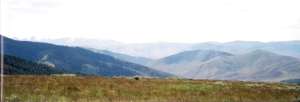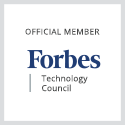Theodore Roosevelt? That Theodore Roosevelt? The one that was president like a hundred years ago? Yep, THAT Theodore Roosevelt. I spent 10 months canoeing with Teddy Roosevelt, dead about 100 years.
How is that possible, you ask? Bear with me, and I will explain, and then I will begin to tell you about the adventure! It was late fall 2012, the executive team and spouses were getting together for a dinner prior to the holiday season. There was to be a guest speaker that evening, Dr. Dan Miller of Historical Solutions. Dr. Miller wrote the book on Goodwill, literally, he is the author of “A Life of Goodwill: Three Leaders and Their Impact on an Organization”, a leadership story of Goodwill Industries of Central Indiana. It was one of those coincidences that I love….several people had been telling me I needed to meet Dan because of my love of history (thanks Angelo!). So, after dinner, I introduced myself and we agreed to meet for coffee a few weeks later.
It was at the coffee that I learned in addition to being a prolific author and speaker, he also does executive coaching (he calls it Creative Conversations) and various types of workshops. As he explained Creative Conversations, he meets with the individual, gets to know them, and selects a person from history. Then throughout eight to ten sessions, he maps out that person’s life and looks for correlations to yours. The kicker to me was that he equates the person’s life to a river, an allegory I have always used as well. As many of you know, I am a river rat. I would rather be on a river than just about any place on the planet. He promised to have my historical figure at our first session; my assignment was to have a competency or trait upon which to focus our development time.
By now you have probably guessed the river I was going to travel was the Theodore Roosevelt River. You are quicker than I, I assumed it would have been either Lewis or Clark, at the very least, one of the men that accompanied them on their adventure. I knew very little about Roosevelt, but I was game. So I threw my canoe in the river and began my journey.
than I, I assumed it would have been either Lewis or Clark, at the very least, one of the men that accompanied them on their adventure. I knew very little about Roosevelt, but I was game. So I threw my canoe in the river and began my journey.
In our first session, he laid out the format that we were to follow. Each session starts with a review of what’s been happening in my life both professionally and personally since our last session. Next is a dive into a specific span of time in Roosevelt’s life (this was done chronologically throughout the 10 sessions). The session concludes with a discussion of three “Paddles” or three questions to ponder. A week or so after each session, Dan provides a copy of the slide deck and a “Guidebook”, or notes of the session, his reflection on our discussion and an assignment for the next session.
To go through each session would take a book…hmmm, I can add THAT to the list of books I am going to write! Instead, let me give you a couple of the highlights of my trip down Roosevelt River. I will explore others in future posts.
Our journey started with looking at Roosevelt in the years 1858 to 1878, ages birth to 19. The first thing that struck me is that Roosevelt was born in 1858, I was born in 1958. As he went through life, our ages would be parallel. He loved to read, was physically active, and had written a book by the time he reached age 19 and entered Harvard. As a child, I also loved to read, played football, baseball and ran track. While I hadn’t written a book, I did want to be a rock star so I had written the lyrics to a couple of hundred songs by the time I was 19. Me? No, I did not go to Harvard, I attended Indiana State and did not fare as well as Roosevelt in my studies.
As would be the norm, Dan challenged me with three paddles. The first would turn out to be somewhat prophetic. Paddle One: A foundational relationship leaves a lasting mark on your approach to communicating with authority. For Roosevelt that foundational relationship was his father Theodore Sr., for me that relationship was my mother (no surprise there). Dan’s analysis would fill pages, but one point stands out.
“There is no question that your mother is a major influence in your approach toward communicating with authority. You learned, and not all that badly, in my view, that you should be modest and unassuming in your communication with authority. You defer in communication. Her experience with and after the fire also opened the way for you to be more expressive in group or audience settings.”
Man, talk about spot on! The assignment based on this paddle, was to write a short paragraph about a step forward taken by my followers. One paragraph about what they did right. Dan stated change was was a gift given to me by my mother through her experience of change and its possibilities.
Believe it or not, the next highlight of my adventure was in the second session. Roosevelt was in his early twenties (age 19 – 25 to be exact). During this time he discovered his love for the west at about the same time he became interested and involved in politics. Because he took to dressing like a cowboy, in Albany he was given the label “the Dude”. Now, this was not meant to be hip and cool like Jeff Bridges’ the Dude in the Big Lebowski, no, this label was a slam.
One of Dan’s paddle went right to the core of a label. “Externally, a label may take control of your communication, for Roosevelt, it, of course, ‘the Dude’. What label applies to you? How does it affect your communication?”
BAM! Another one hits the mark. For me, its the “IT Guy” label. I have been in IT for over 30 years. At times, that label can get in the way. I would rather be seen as a “Business Guy” with an IT expertise. I can’t tell you how many times I have been in a meeting and the phone, projector, or microphone doesn’t work. What happens? All eyes turn to me…the IT Guy! Hell, I can’t fix it! When my technology doesn’t work, I call one of our outstanding support technicians!
My assignment was to write two lists. The first was a list of things about me as person that have nothing to do with IT. The second was a list of the things a CIO does beyond being the IT Chief. The next step was to match up the two lists and look for ways in which I, as more than IT, blends with CIO, as more than IT.
OK, I am in danger of getting a DR;TL comment (Did not Read; Too Long)…throughout upcoming posts, I will explore sections of the Roosevelt River and dive deeper into the lessons I learned through this journey. In the mean time, I highly recommend Dr. Miller’s Creative Conversations to anyone that is looking to learn more about themselves and to grow professionally and personally.
If anything you read here or in other posts strikes a chord, I would love to hear from you. Leave a comment, hit me up on Twitter (@jtongici), find me on LinkedIn, or Google +.


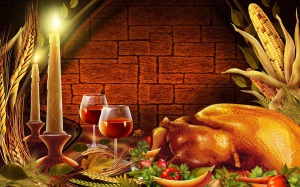 Road 46 between Indianapolis and Nashville (Nashville, Indiana that is). My first wife, our two kids and I were heading to her mom’s place for Thanksgiving. The drive was going, well, it was going like you would expect it to go with two boys under the age of 10 strapped in a car in the days before iPods, Gameboys, iPads, and cars with DVD players. Even though it wasn’t a long drive, they were still bouncing off the ceiling. My wife was reading, and me? I was jamming out to Q95 (well, as jamming out as you can be with a wife and two kids in the car).
Road 46 between Indianapolis and Nashville (Nashville, Indiana that is). My first wife, our two kids and I were heading to her mom’s place for Thanksgiving. The drive was going, well, it was going like you would expect it to go with two boys under the age of 10 strapped in a car in the days before iPods, Gameboys, iPads, and cars with DVD players. Even though it wasn’t a long drive, they were still bouncing off the ceiling. My wife was reading, and me? I was jamming out to Q95 (well, as jamming out as you can be with a wife and two kids in the car). back, listening to the same Q95, low and behold they played the same song, at the exact same time! Amazing! What is the coincidence of that? (Ok, it wasn’t for another year or two that I realized it was a Q95 Thanksgiving day tradition to play Alice’s Restaurant at Noon, I was a REAL slow learner back then!)
back, listening to the same Q95, low and behold they played the same song, at the exact same time! Amazing! What is the coincidence of that? (Ok, it wasn’t for another year or two that I realized it was a Q95 Thanksgiving day tradition to play Alice’s Restaurant at Noon, I was a REAL slow learner back then!)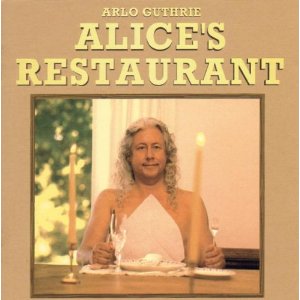 and Brad, their families, our folks, and the occasional friend, we play “Alice’s Restaurant” and sing along. We even printed off all the lyrics so our folks could be sure and follow along. Dave and his wonderful baritone providing cover for all the rest of us who can’t really sing.
and Brad, their families, our folks, and the occasional friend, we play “Alice’s Restaurant” and sing along. We even printed off all the lyrics so our folks could be sure and follow along. Dave and his wonderful baritone providing cover for all the rest of us who can’t really sing.
 At first there was some awkward chit-chat and bemusement, I don’t think many of them could believe we were actually on a hay ride. The further along the pathways we traveled, the polite chit-chat gave way to laughter, spirited conversation and picture taking. You could sit and watch the inner child come out. By the time, we were halfway done, there was debate about which wagon was the “cool, more fun wagon”. (Personally, I think the one I was in was the cool wagon!).
At first there was some awkward chit-chat and bemusement, I don’t think many of them could believe we were actually on a hay ride. The further along the pathways we traveled, the polite chit-chat gave way to laughter, spirited conversation and picture taking. You could sit and watch the inner child come out. By the time, we were halfway done, there was debate about which wagon was the “cool, more fun wagon”. (Personally, I think the one I was in was the cool wagon!).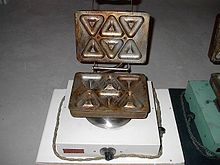 the back behind all the luggage would be THE MACHINES! (The machines were actually called “Brown Bobbies”) (
the back behind all the luggage would be THE MACHINES! (The machines were actually called “Brown Bobbies”) ( Grandpa. At some point, it occurred to me, I was truly making Grandpa’s donuts for the first time. Our first grandson, Braxton, was born in September, making me an “official” Grandpa!
Grandpa. At some point, it occurred to me, I was truly making Grandpa’s donuts for the first time. Our first grandson, Braxton, was born in September, making me an “official” Grandpa!